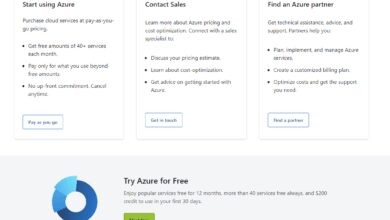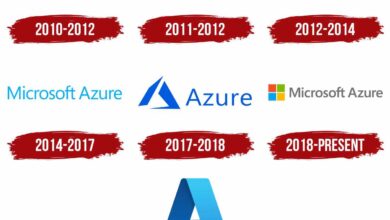And azure: 7 Powerful Ways AWS and Azure Transform Cloud Computing
In today’s fast-evolving digital landscape, cloud computing has become the backbone of innovation, scalability, and efficiency. Among the top players, AWS and Azure stand out as titans shaping the future of enterprise technology.
Understanding AWS and Azure: The Cloud Giants

When discussing cloud computing platforms, two names dominate the conversation: Amazon Web Services (AWS) and Microsoft Azure. These platforms have redefined how businesses deploy, manage, and scale applications in the digital era. Both offer a comprehensive suite of cloud services, including computing power, storage, networking, machine learning, and more. However, their origins, architectures, and strategic focuses differ significantly, making the comparison between AWS and Azure a critical topic for IT decision-makers.
Origins and Evolution of AWS
AWS, launched by Amazon in 2006, was the first major player in the public cloud space. It began as an internal infrastructure solution before being offered to external developers. Its early entry gave AWS a significant first-mover advantage, allowing it to build a vast global infrastructure and an extensive portfolio of over 200 services.
- AWS pioneered services like EC2 (Elastic Compute Cloud) and S3 (Simple Storage Service).
- It now operates in 33 geographic regions worldwide, with plans for expansion.
- AWS holds the largest market share in cloud infrastructure, estimated at over 30% as of 2024.
According to AWS’s official site, the platform serves millions of customers, including startups, enterprises, and government agencies.
Microsoft Azure’s Rise to Prominence
Microsoft Azure, initially launched in 2010 as Windows Azure, evolved from Microsoft’s enterprise software roots. Unlike AWS, Azure was built with hybrid cloud integration in mind, making it a natural choice for organizations already using Microsoft products like Windows Server, Active Directory, and Office 365.
- Azure integrates seamlessly with existing Microsoft ecosystems.
- It supports both Windows and Linux workloads, offering flexibility.
- As of 2024, Azure operates in 60+ regions, the most of any cloud provider.
Microsoft’s strong enterprise relationships and hybrid cloud strategy have fueled Azure’s rapid growth. As noted on Microsoft’s official Azure page, the platform powers 95% of Fortune 500 companies.
“The cloud is not about replacing IT; it’s about transforming it.” — Satya Nadella, CEO of Microsoft
Key Differences Between AWS and Azure
While AWS and Azure offer similar core services, their differences lie in architecture, pricing, integration, and target audience. Understanding these distinctions is crucial for organizations choosing the right cloud partner. The decision between AWS and Azure often hinges on existing infrastructure, business goals, and technical requirements.
Service Offerings and Innovation
AWS is known for its breadth and depth of services. It was the first to introduce serverless computing with AWS Lambda and continues to lead in areas like containerization (ECS, EKS), AI/ML (SageMaker), and IoT (IoT Core). Its vast service catalog allows developers to build highly specialized solutions.
- AWS offers over 200 fully featured services.
- It leads in open-source support and developer tools.
- Services like AWS Lambda and DynamoDB set industry benchmarks.
In contrast, Azure emphasizes integration with Microsoft’s ecosystem. Its strength lies in hybrid cloud solutions, enterprise-grade security, and AI services powered by Microsoft Research. Azure’s AI offerings, such as Azure Cognitive Services and OpenAI integration, are particularly compelling for businesses leveraging AI.
- Azure provides deep integration with Microsoft 365, Dynamics 365, and Power Platform.
- It leads in hybrid cloud with Azure Stack and Azure Arc.
- Azure’s AI and machine learning tools are tightly coupled with enterprise workflows.
For a detailed comparison of services, visit AWS Product List and Azure Products.
Pricing and Cost Management
Pricing is a critical factor when comparing AWS and Azure. Both platforms use a pay-as-you-go model, but their pricing structures and cost optimization tools differ.
- AWS offers Reserved Instances and Savings Plans for long-term cost reduction.
- Azure provides Reserved VM Instances and Hybrid Benefit, which allows customers to use existing Windows Server licenses for savings.
- Azure’s pricing is often more predictable for Microsoft-centric organizations.
Tools like AWS Cost Explorer and Azure Cost Management help users monitor and optimize spending. However, AWS’s pricing can be more complex due to the sheer number of services and configurations. Azure’s integration with Microsoft licensing can simplify budgeting for enterprises already invested in Microsoft products.
“Cost is not just about price; it’s about value delivered per dollar spent.” — Industry Analyst, Gartner
Hybrid and Multi-Cloud Strategies with AWS and Azure
Modern enterprises rarely rely on a single cloud provider. The rise of hybrid and multi-cloud strategies has made interoperability between AWS and Azure essential. Organizations use both platforms to avoid vendor lock-in, optimize performance, and meet regulatory requirements.
Hybrid Cloud Capabilities
Azure leads in hybrid cloud with solutions like Azure Stack, which extends Azure services to on-premises environments. This allows businesses to run cloud workloads locally while maintaining consistency with the public cloud.
- Azure Stack enables consistent management across on-prem and cloud.
- It supports Kubernetes, DevOps, and AI workloads on-premises.
- Ideal for industries with strict data sovereignty laws.
AWS, while initially focused on public cloud, has strengthened its hybrid offerings with AWS Outposts. This service brings AWS infrastructure and services into on-premises data centers, offering a true extension of the AWS cloud.
- AWS Outposts supports EC2, EBS, and S3 locally.
- It integrates with AWS management tools like CloudFormation and CloudWatch.
- Suitable for low-latency applications and data residency needs.
Both AWS and Azure recognize the importance of hybrid environments. For more details, explore AWS Outposts and Azure Hybrid Cloud.
Multi-Cloud Integration and Management
Running workloads across AWS and Azure requires robust management tools. Solutions like Azure Arc and AWS Systems Manager enable cross-cloud governance, security, and monitoring.
- Azure Arc allows management of AWS and GCP resources from the Azure portal.
- AWS Systems Manager supports hybrid environments but lacks native Azure integration.
- Third-party tools like Terraform and Kubernetes (EKS on AWS, AKS on Azure) facilitate multi-cloud deployments.
Organizations adopting a multi-cloud strategy with AWS and Azure benefit from increased resilience, flexibility, and innovation. However, they must invest in skilled personnel and automation to manage complexity.
“The future of cloud is not one platform, but many working together.” — Tech Visionary, Forbes
Security and Compliance in AWS and Azure
Security is a top concern for any organization moving to the cloud. Both AWS and Azure offer robust security features, but their approaches reflect their underlying philosophies. When evaluating AWS and Azure, security posture is a decisive factor.
Security Architecture and Shared Responsibility
Both platforms follow the shared responsibility model: the cloud provider secures the infrastructure, while the customer secures their data and applications.
- AWS provides IAM (Identity and Access Management), KMS (Key Management Service), and GuardDuty for threat detection.
- Azure offers Azure AD (Active Directory), Azure Security Center, and Defender for Cloud.
- Both support encryption at rest and in transit.
AWS’s security model is highly granular, allowing fine-tuned control over permissions and policies. Azure, on the other hand, integrates tightly with Microsoft’s identity solutions, making it easier for enterprises to manage user access across cloud and on-prem systems.
Compliance and Certifications
AWS and Azure comply with major global standards such as GDPR, HIPAA, ISO 27001, and SOC 2. However, Azure often has an edge in government and enterprise compliance due to Microsoft’s long-standing relationships with regulatory bodies.
- Azure Government and AWS GovCloud cater to U.S. government agencies.
- Azure supports more compliance certifications globally, especially in Europe and Asia.
- AWS leads in transparency with its AWS Artifact service for compliance reports.
For compliance details, visit AWS Compliance and Microsoft Compliance.
“Security is not a product, but a process.” — Bruce Schneier, Security Expert
Performance and Global Infrastructure of AWS and Azure
The performance of cloud platforms depends heavily on their global infrastructure. Latency, availability, and redundancy are influenced by the number and distribution of data centers. AWS and Azure have invested billions in building resilient, high-performance networks.
Data Center Footprint and Availability
AWS operates in 33 geographic regions with 102 Availability Zones. Each region is isolated and consists of multiple AZs for fault tolerance.
- AWS regions span North America, Europe, Asia-Pacific, Middle East, and South America.
- New regions are planned in countries like Switzerland, UAE, and Israel.
- High availability is ensured through multi-AZ deployments and global load balancing.
Azure operates in over 60 regions, the most of any cloud provider. This extensive footprint allows organizations to deploy applications closer to end-users, reducing latency.
- Azure has a strong presence in Europe and emerging markets.
- It offers unique regions like Africa (South Africa) and India (multiple regions).
- Azure’s global network includes subsea cables and peering agreements for low-latency connectivity.
For real-time performance data, check AWS Speed Test and Azure Updates.
Networking and Content Delivery
Both AWS and Azure offer content delivery networks (CDNs) and advanced networking features.
- AWS CloudFront provides low-latency content delivery with edge locations worldwide.
- Azure CDN, powered by Microsoft’s global network, offers similar performance with integration into Azure services.
- Both support DDoS protection, private connectivity (AWS Direct Connect, Azure ExpressRoute), and hybrid networking.
Organizations with global user bases benefit from the extensive reach of AWS and Azure. Choosing between them often depends on proximity to target markets and integration needs.
“Speed is the new currency of digital experience.” — Tech Analyst, McKinsey
Innovation and Future Trends in AWS and Azure
The competition between AWS and Azure drives continuous innovation. Both companies invest heavily in AI, quantum computing, edge computing, and sustainability. The future of AWS and Azure will be shaped by these emerging technologies.
Artificial Intelligence and Machine Learning
AWS offers SageMaker, a fully managed service for building, training, and deploying ML models. It supports popular frameworks like TensorFlow and PyTorch.
- SageMaker Autopilot automates model creation.
- Integration with AWS IoT enables AI at the edge.
- Supports large-scale data processing with Amazon EMR and Redshift.
Azure’s AI platform includes Azure Machine Learning, Cognitive Services, and the recent integration with OpenAI (including GPT models).
- Azure OpenAI Service allows enterprises to use advanced language models securely.
- Cognitive Services provide pre-built APIs for vision, speech, and language.
- Tight integration with Power BI and Dynamics 365 enhances business intelligence.
For developers, explore AWS SageMaker and Azure Machine Learning.
Quantum Computing and Edge Innovation
AWS offers Amazon Braket, a quantum computing service that allows researchers to experiment with quantum algorithms.
- Partners with quantum hardware providers like IonQ and Rigetti.
- Provides simulation tools for quantum circuit development.
- Still in early stages but shows long-term vision.
Azure Quantum is Microsoft’s answer, offering access to quantum hardware from partners like Quantinuum and Pasqal.
- Integrated with Azure’s AI and HPC services.
- Focuses on solving complex optimization problems.
- Supports Q# programming language for quantum development.
Edge computing is another frontier. AWS Greengrass and Azure IoT Edge enable processing data closer to the source, reducing latency and bandwidth usage.
“The next decade of cloud will be defined by AI, edge, and quantum.” — Industry Forecast, IDC
Choosing Between AWS and Azure: A Strategic Decision
Selecting between AWS and Azure is not a one-size-fits-all decision. It requires evaluating business needs, technical requirements, existing infrastructure, and long-term goals. The choice of AWS and Azure can impact scalability, cost, security, and innovation.
When to Choose AWS
AWS is ideal for organizations that prioritize:
- Service breadth and innovation.
- Open-source technologies and developer flexibility.
- Global scalability and high-performance computing.
- Startups and tech-first companies looking for cutting-edge tools.
Companies already using AWS services or those building cloud-native applications often find AWS to be the most flexible and powerful option.
When to Choose Azure
Azure is better suited for:
- Enterprises with existing Microsoft investments (Windows, Office, Active Directory).
- Organizations requiring hybrid cloud capabilities.
- Industries with strict compliance needs (government, healthcare, finance).
- Businesses leveraging AI through Microsoft’s OpenAI partnership.
For many enterprises, Azure offers a smoother transition to the cloud with minimal disruption to existing workflows.
What is the main difference between AWS and Azure?
The main difference lies in their origins and focus. AWS, launched in 2006, is the pioneer in cloud computing with a vast array of services and a strong focus on innovation and scalability. Azure, launched in 2010, emphasizes integration with Microsoft’s enterprise ecosystem, making it ideal for hybrid cloud and organizations already using Microsoft products.
Which is more cost-effective: AWS or Azure?
Cost-effectiveness depends on the use case. AWS offers more granular pricing and long-term savings through Reserved Instances. Azure can be more cost-effective for Microsoft-centric organizations due to its Hybrid Benefit, which allows the use of existing Windows Server licenses. A detailed cost analysis using tools like AWS Cost Explorer and Azure Total Cost of Ownership Calculator is recommended.
Can AWS and Azure be used together?
Yes, many organizations use both AWS and Azure in a multi-cloud strategy. Tools like Azure Arc and AWS Systems Manager enable cross-cloud management. Kubernetes (EKS on AWS, AKS on Azure) and infrastructure-as-code tools like Terraform also facilitate integration between the two platforms.
Which cloud platform is better for AI and machine learning?
Both platforms offer strong AI/ML capabilities. AWS SageMaker is a comprehensive, flexible platform for building ML models. Azure stands out with its integration of OpenAI models (like GPT) through Azure OpenAI Service, making it a top choice for enterprises seeking advanced language models with enterprise-grade security.
Does Azure have more data centers than AWS?
Yes, Azure operates in over 60 regions, more than AWS’s 33 regions. However, AWS has more Availability Zones (102) compared to Azure. The number of regions affects latency and data residency options, making Azure a better choice for organizations needing local presence in specific geographic areas.
In conclusion, the rivalry between AWS and Azure continues to drive innovation, reliability, and value in the cloud computing space. Whether you choose AWS for its breadth and pioneering spirit or Azure for its enterprise integration and hybrid strength, both platforms offer powerful tools to transform your digital infrastructure. The key is aligning your choice with your organization’s goals, existing ecosystem, and future ambitions. As cloud technology evolves, the synergy between AWS and Azure will likely shape the next generation of digital transformation.
Further Reading:









